100 Gb/s Silicon Photonic WDM Transmitter with Misalignment-Tolerant Surface-Normal Optical Interfaces
Abstract
1. Introduction
2. Structure and Principle
2.1. Bidirectional Grating Coupler
2.2. BGC-Based Silicon E-O Modulator in Push-Pull Scheme
3. Experiment Results
3.1. Bidirectional Grating Coupler
3.2. BGC-Based E-O Modulator in Push-Pull Operation Mode
4. Conclusions
Author Contributions
Funding
Conflicts of Interest
References
- Gantz, J.; Reinsel, D.; Arend, C. The digital universe in 2020: Big data, bigger digital shadows, and biggest growth in the far east-western Europe. IDC Analyze Futrue 2012, 2007, 1–16. [Google Scholar]
- Reed, G.T.; Mashanovich, G.; Gardes, F.Y.; Thomson, D.J. Silicon optical modulators. Nat. Photonics 2010, 4, 518–526. [Google Scholar] [CrossRef]
- Thomson, D.J.; Gardes, F.Y.; Hu, Y.; Mashanovich, G.; Fournier, M.; Grosse, P.; Fedeli, J.M.; Reed, G.T. High contrast 40Gbit/s optical modulation in silicon. Opt. Express 2011, 19, 11507–11516. [Google Scholar] [CrossRef] [PubMed]
- Sun, J.; Kumar, R.; Sakib, M.; Driscoll, J.B.; Jayatilleka, H.; Rong, H.S. A 128 Gb/s PAM4 Silicon Microring Modulator With Integrated Thermo-Optic Resonance Tuning. J. Lightwave Technol. 2019, 37, 110–115. [Google Scholar] [CrossRef]
- Milivojevic, B.; Wiese, S.; Anderson, S.; Brenner, T.; Webster, M.; Dama, B. Demonstration of Optical Transmission at Bit Rates of Up to 321.4 Gb/s Using Compact Silicon Based Modulator and Linear BiCMOS MZM Driver. J. Lightwave Technol. 2017, 35, 768–774. [Google Scholar] [CrossRef]
- Tu, X.; Song, C.L.; Huang, T.Y.; Chen, Z.M.; Fu, H.Y. State of the Art and Perspectives on Silicon Photonic Switches. Micromachines 2019, 10, 51. [Google Scholar] [CrossRef] [PubMed]
- Kang, Y.M.; Liu, H.D.; Morse, M.; Paniccia, M.J.; Zadka, M.; Litski, S.; Sarid, G.; Pauchard, A.; Kuo, Y.H.; Chen, H.W.; et al. Monolithic germanium/silicon avalanche photodiodes with 340 GHz gain-bandwidth product. Nat. Photonics 2009, 3, 59–63. [Google Scholar] [CrossRef]
- Assefa, S.; Xia, F.N.A.; Vlasov, Y.A. Reinventing germanium avalanche photodetector for nanophotonic on-chip optical interconnects. Nature 2010, 464, 80–91. [Google Scholar] [CrossRef]
- Simola, E.T.; De Iacovo, A.; Frigerio, J.; Ballabio, A.; Fabbri, A.; Isella, G.; Colace, L. Voltage-tunable dual-band Ge/Si photodetector operating in VIS and NIR spectral range. Opt. Express 2019, 27, 8529–8539. [Google Scholar] [CrossRef]
- Li, C.; Zhang, H.J.; Yu, M.B.; Lo, G.Q. CMOS-compatible high efficiency double-etched apodized waveguide grating coupler. Opt. Express 2013, 21, 7868–7874. [Google Scholar] [CrossRef]
- Piggott, A.Y.; Lu, J.; Lagoudakis, K.G.; Petykiewicz, J.; Babinec, T.M.; Vuckovic, J. Inverse design and demonstration of a compact and broadband on-chip wavelength demultiplexer. Nat. Photonics 2015, 9, 374. [Google Scholar] [CrossRef]
- Xu, L.H.; Wang, Y.; El-Fiky, E.; Mao, D.; Kumar, A.; Xing, Z.P.; Saber, M.G.; Jacques, M.; Plant, D.V. Compact Broadband Polarization Beam Splitter Based on Multimode Interference Coupler With Internal Photonic Crystal for the SOI Platform. J. Lightwave Technol. 2019, 37, 1231–1240. [Google Scholar] [CrossRef]
- Sun, C.; Wade, M.T.; Lee, Y.; Orcutt, J.S.; Alloatti, L.; Georgas, M.S.; Waterman, A.S.; Shainline, J.M.; Avizienis, R.R.; Lin, S.; et al. Single-chip microprocessor that communicates directly using light. Nature 2015, 528, 534. [Google Scholar] [CrossRef] [PubMed]
- Atabaki, A.H.; Moazeni, S.; Pavanello, F.; Gevorgyan, H.; Notaros, J.; Alloatti, L.; Wade, M.T.; Sun, C.; Kruger, S.A.; Meng, H.Y.; et al. Integrating photonics with silicon nanoelectronics for the next generation of systems on a chip. Nature 2018, 556, 349–354. [Google Scholar] [CrossRef] [PubMed]
- Kupijai, S.; Rhee, H.; Al-Saadi, A.; Henniges, M.; Bronzi, D.; Selicke, D.; Theiss, C.; Otte, S.; Eichler, H.J.; Woggon, U.; et al. 25 Gb/s Silicon Photonics Interconnect Using a Transmitter Based on a Node-Matched-Diode Modulator. J. Lightwave Technol. 2016, 34, 2920–2923. [Google Scholar] [CrossRef]
- Streshinsky, M.; Novack, A.; Ding, R.; Liu, Y.; Lim, A.E.J.; Lo, P.G.Q.; Baehr-Jones, T.; Hochberg, M. Silicon Parallel Single Mode 48 × 50 Gb/s Modulator and Photodetector Array. J. Lightwave Technol. 2014, 32, 3768–3775. [Google Scholar] [CrossRef]
- Li, C.; Bai, R.; Shafik, A.; Tabasy, E.Z.; Wang, B.H.; Tang, G.; Ma, C.; Chen, C.H.; Peng, Z.; Fiorentino, M.; et al. Silicon Photonic Transceiver Circuits With Microring Resonator Bias-Based Wavelength Stabilization in 65 nm CMOS. IEEE J. Solid-St. Circ. 2014, 49, 1419–1436. [Google Scholar] [CrossRef]
- Manipatruni, S.; Chen, L.; Lipson, M. Ultra high bandwidth WDM using silicon microring modulators. Opt. Express 2010, 18, 16858–16867. [Google Scholar] [CrossRef] [PubMed]
- Chen, C.H.; Seyedi, M.A.; Fiorentino, M.; Livshits, D.; Gubenko, A.; Mikhrin, S.; Mikhrin, V.; Beausoleil, R.G. A comb laser-driven DWDM silicon photonic transmitter based on microring modulators. Opt. Express 2015, 23, 21541–21548. [Google Scholar] [CrossRef]
- Zhang, Z.Y.; Huang, B.J.; Zhang, Z.; Cheng, C.T.; Chen, H.D. Bidirectional grating coupler based optical modulator for low-loss Integration and low-cost fiber packaging. Opt. Express 2013, 21, 14202–14214. [Google Scholar] [CrossRef]
- Chen, X.; Li, C.; Fung, C.K.Y.; Lo, S.M.G.; Tsang, H.K. Apodized Waveguide Grating Couplers for Efficient Coupling to Optical Fibers. IEEE Photonics Technol. Lett. 2010, 22, 1156–1158. [Google Scholar] [CrossRef]
- Zhang, Z.Y.; Huang, B.J.; Zhang, Z.; Cheng, C.T.; Liu, H.W.; Li, H.Q.; Chen, H.D. Highly efficient vertical fiber interfacing grating coupler with bilayer anti-reflection cladding and backside metal mirror. Opt. Laser Technol. 2017, 90, 136–143. [Google Scholar] [CrossRef]
- Fang, Q.; Liow, T.Y.; Song, J.F.; Tan, C.W.; Bin Yu, M.; Lo, G.Q.; Kwong, D.L. Suspended optical fiber-to-waveguide mode size converter for Silicon photonics. Opt. Express 2010, 18, 7763–7769. [Google Scholar] [CrossRef] [PubMed]

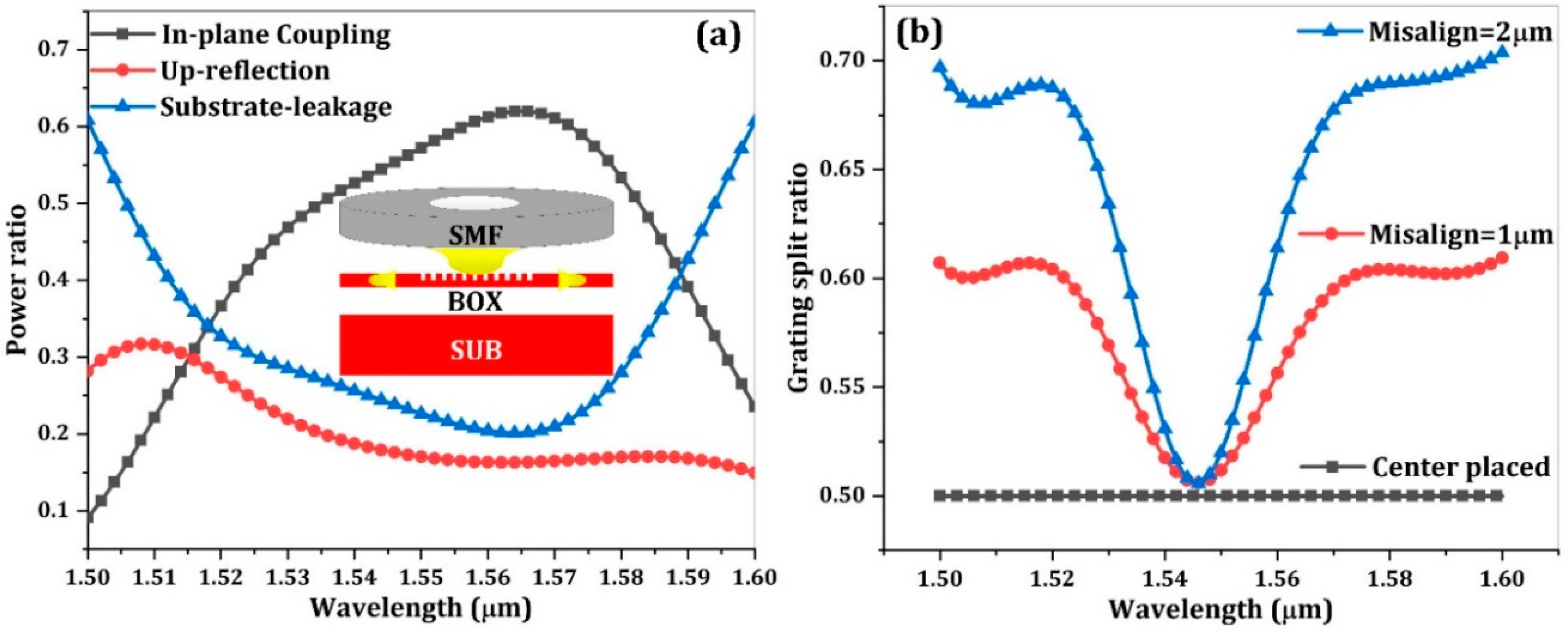

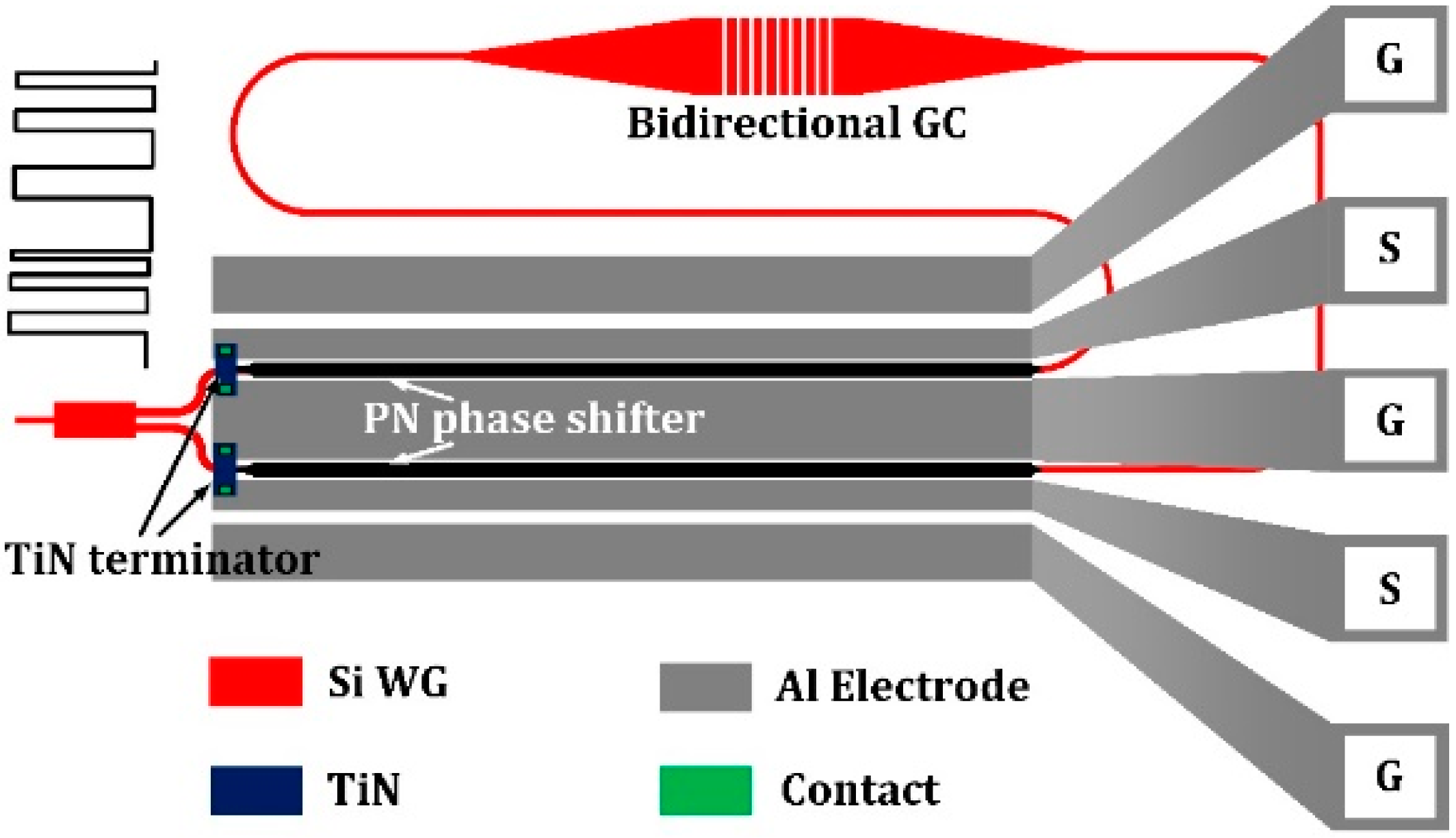
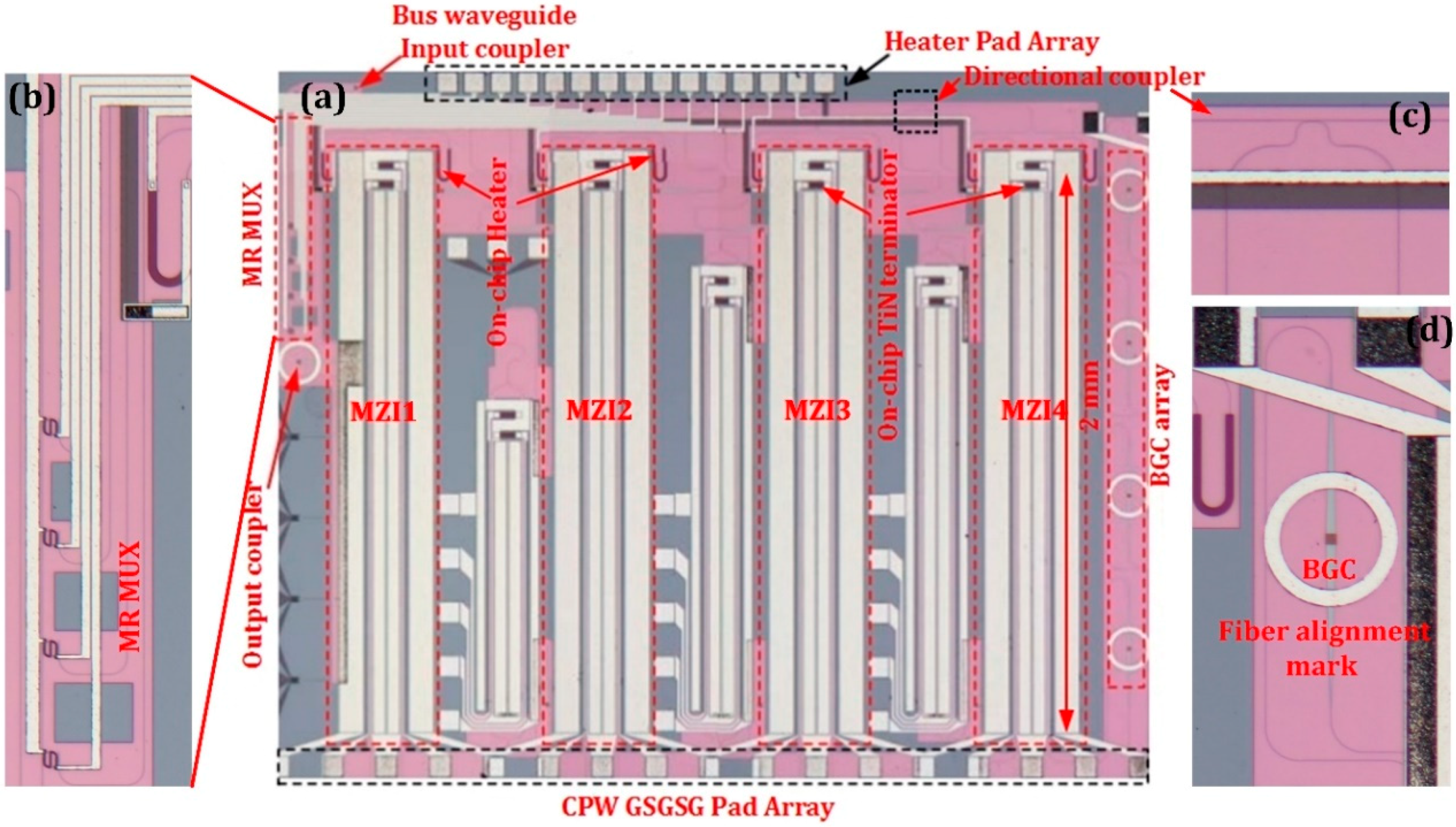
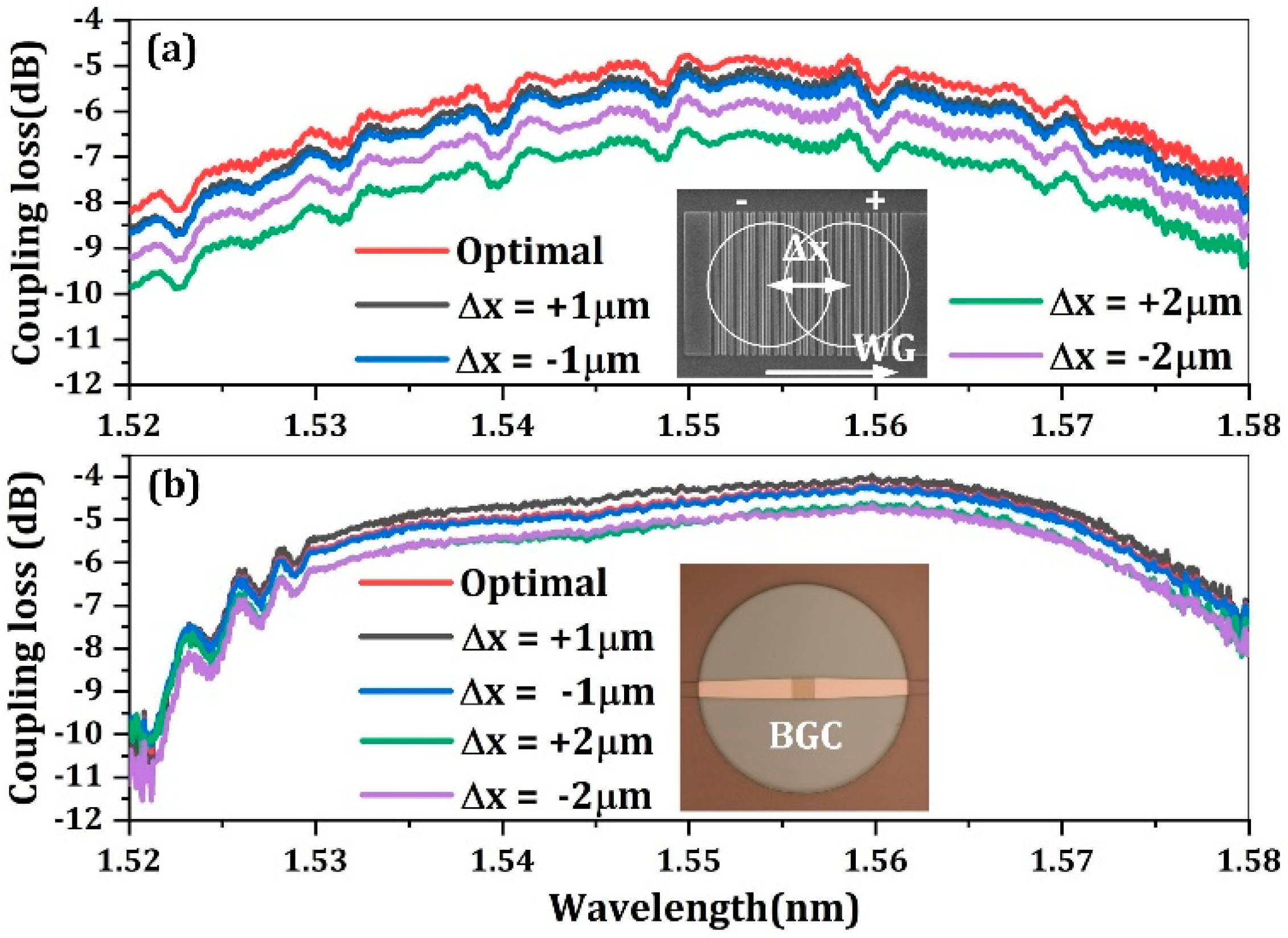
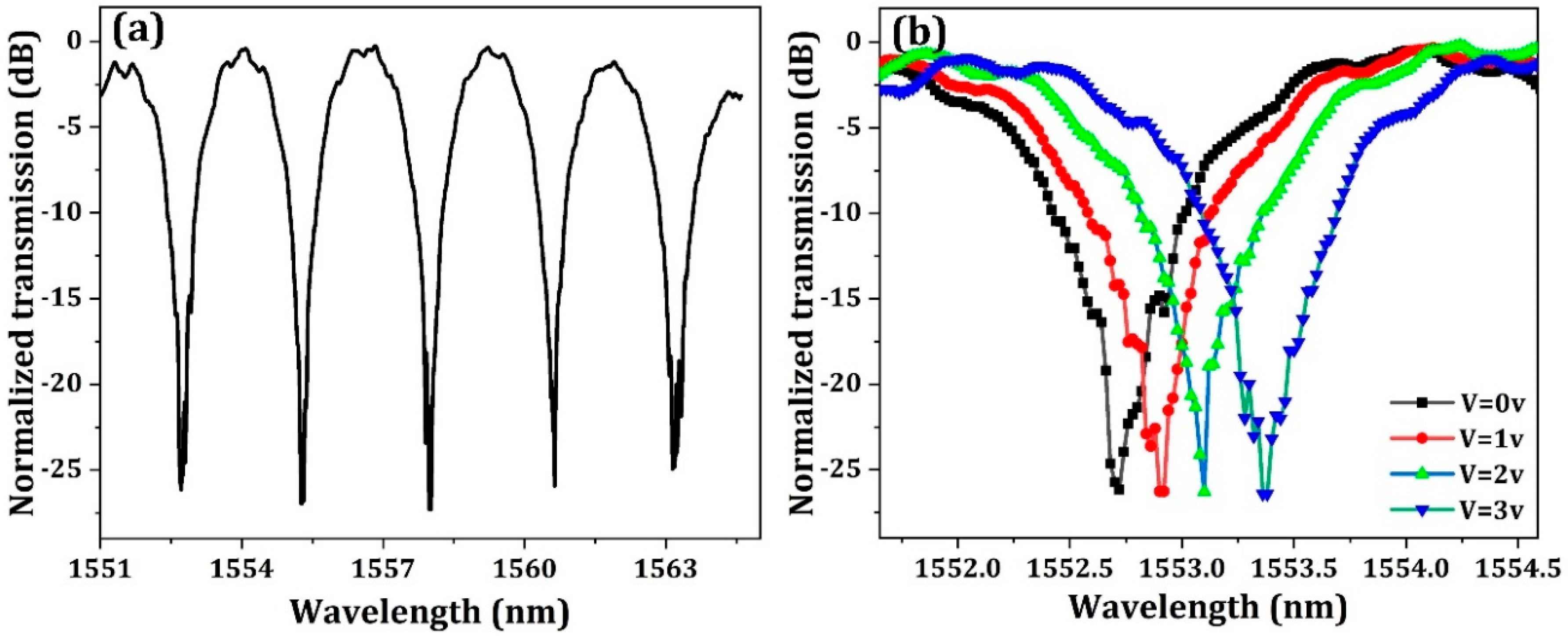
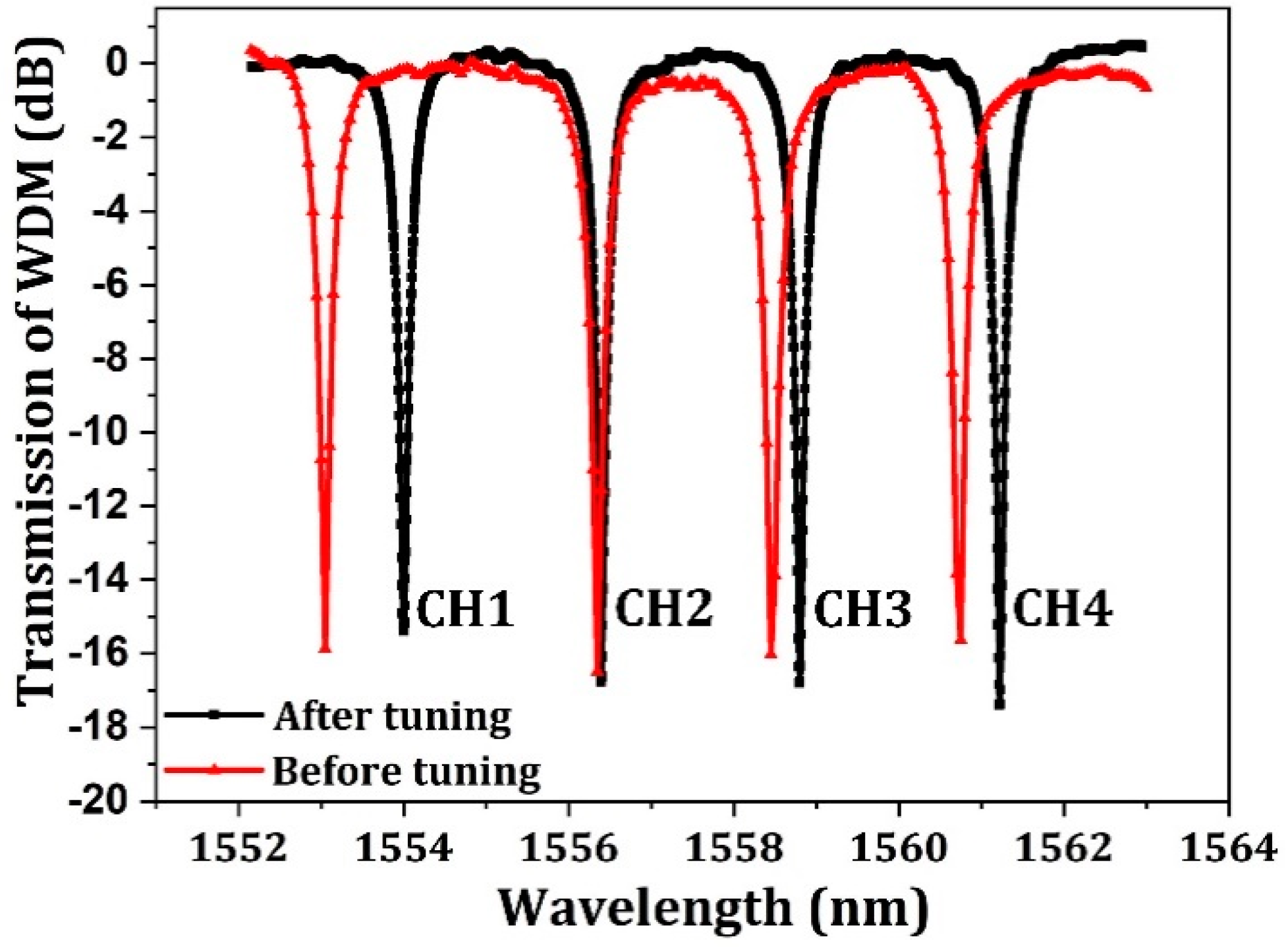
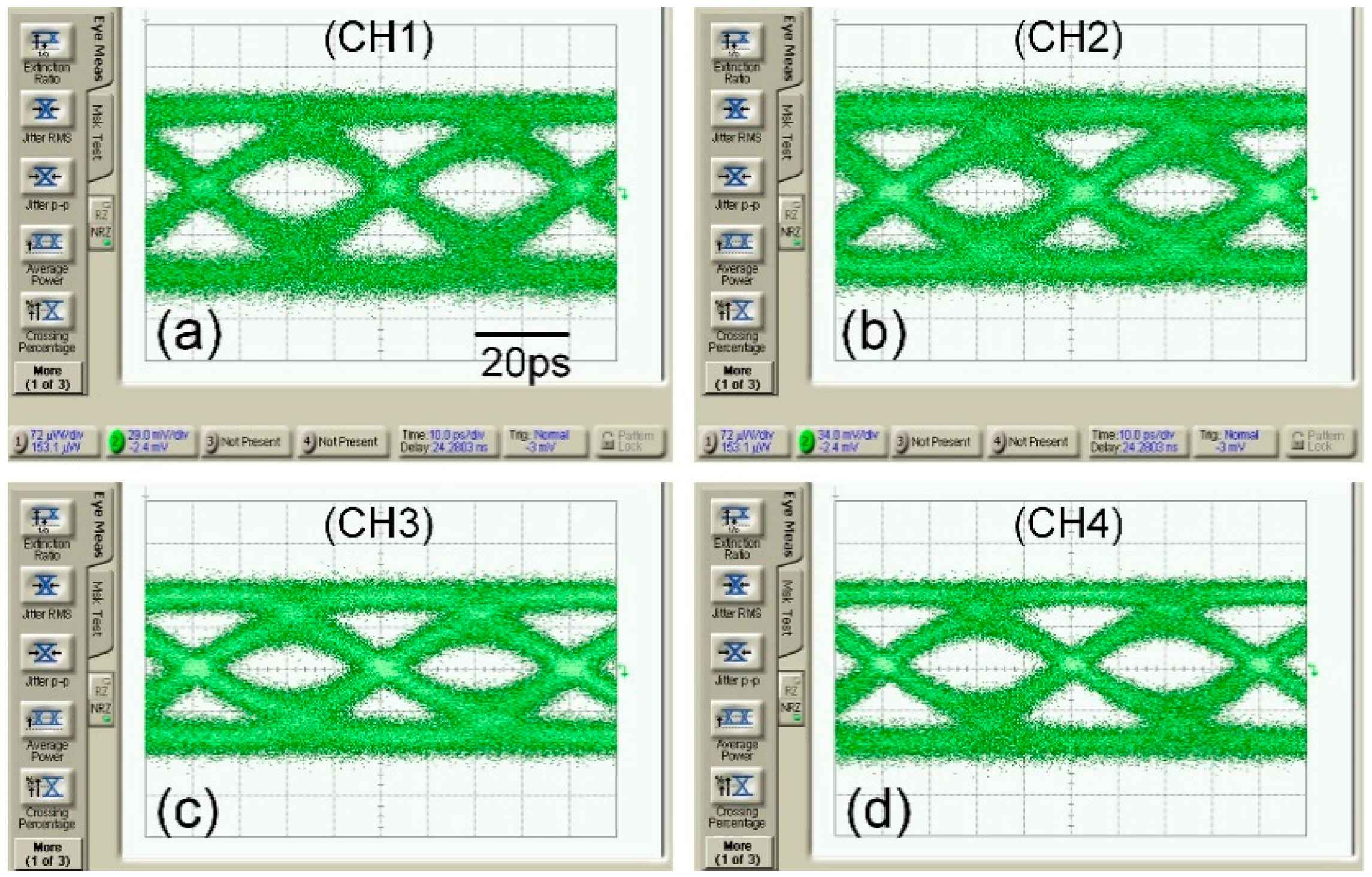
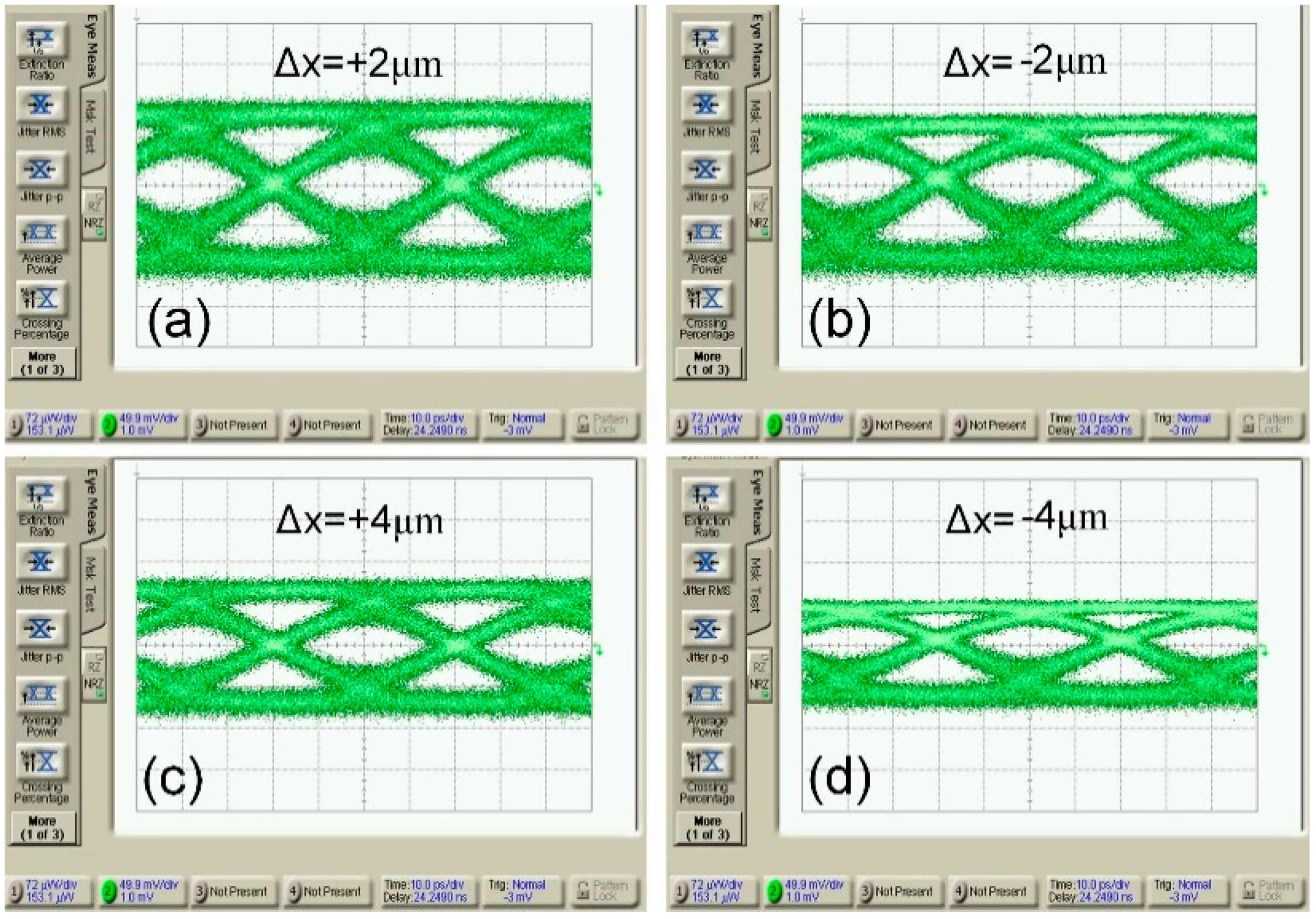
© 2019 by the authors. Licensee MDPI, Basel, Switzerland. This article is an open access article distributed under the terms and conditions of the Creative Commons Attribution (CC BY) license (http://creativecommons.org/licenses/by/4.0/).
Share and Cite
Huang, B.; Zhang, Z.; Zhang, Z.; Cheng, C.; Zhang, H.; Zhang, H.; Chen, H. 100 Gb/s Silicon Photonic WDM Transmitter with Misalignment-Tolerant Surface-Normal Optical Interfaces. Micromachines 2019, 10, 336. https://doi.org/10.3390/mi10050336
Huang B, Zhang Z, Zhang Z, Cheng C, Zhang H, Zhang H, Chen H. 100 Gb/s Silicon Photonic WDM Transmitter with Misalignment-Tolerant Surface-Normal Optical Interfaces. Micromachines. 2019; 10(5):336. https://doi.org/10.3390/mi10050336
Chicago/Turabian StyleHuang, Beiju, Zanyun Zhang, Zan Zhang, Chuantong Cheng, Huang Zhang, Hengjie Zhang, and Hongda Chen. 2019. "100 Gb/s Silicon Photonic WDM Transmitter with Misalignment-Tolerant Surface-Normal Optical Interfaces" Micromachines 10, no. 5: 336. https://doi.org/10.3390/mi10050336
APA StyleHuang, B., Zhang, Z., Zhang, Z., Cheng, C., Zhang, H., Zhang, H., & Chen, H. (2019). 100 Gb/s Silicon Photonic WDM Transmitter with Misalignment-Tolerant Surface-Normal Optical Interfaces. Micromachines, 10(5), 336. https://doi.org/10.3390/mi10050336





